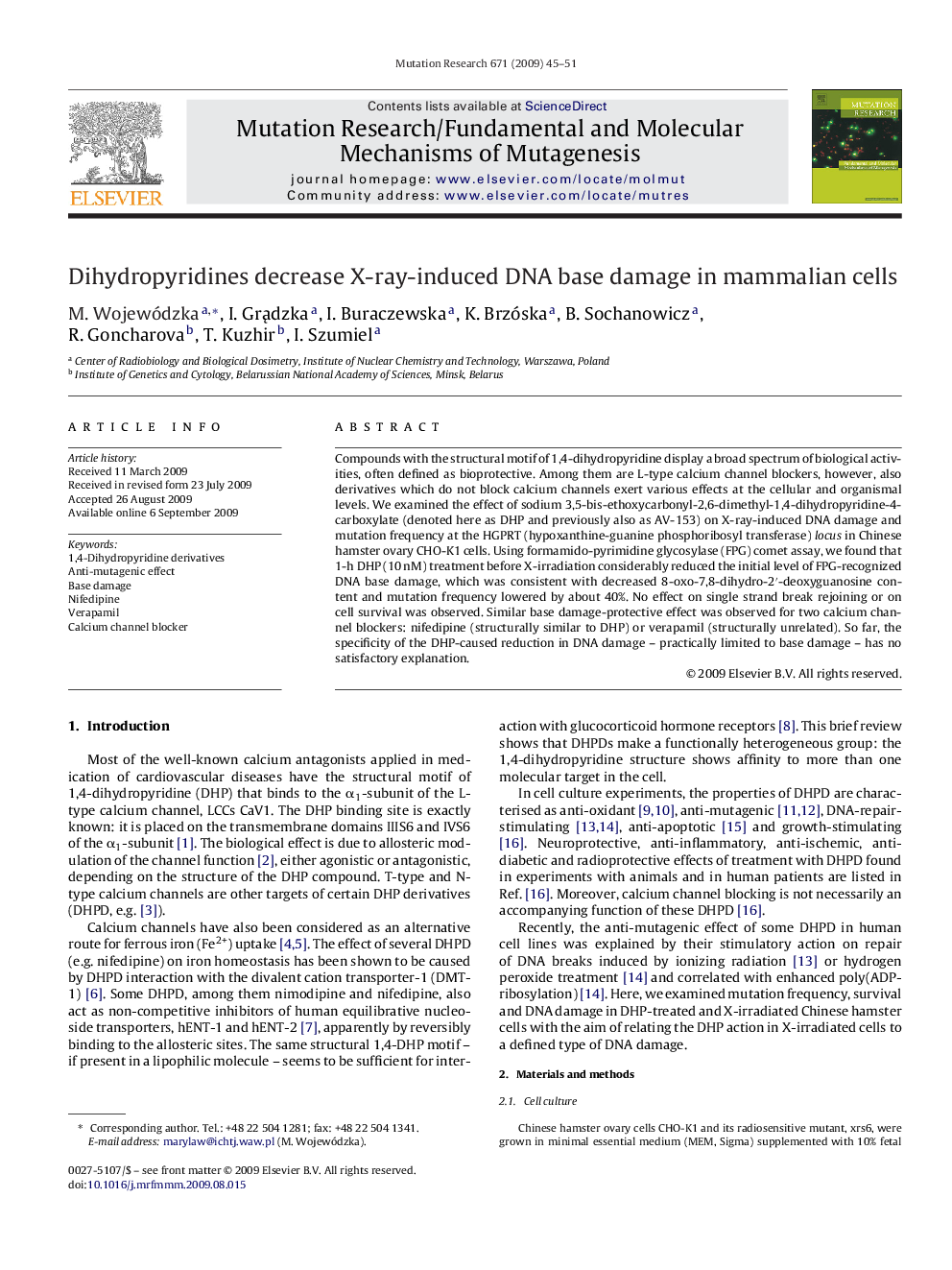| Article ID | Journal | Published Year | Pages | File Type |
|---|---|---|---|---|
| 2146844 | Mutation Research/Fundamental and Molecular Mechanisms of Mutagenesis | 2009 | 7 Pages |
Abstract
Compounds with the structural motif of 1,4-dihydropyridine display a broad spectrum of biological activities, often defined as bioprotective. Among them are L-type calcium channel blockers, however, also derivatives which do not block calcium channels exert various effects at the cellular and organismal levels. We examined the effect of sodium 3,5-bis-ethoxycarbonyl-2,6-dimethyl-1,4-dihydropyridine-4-carboxylate (denoted here as DHP and previously also as AV-153) on X-ray-induced DNA damage and mutation frequency at the HGPRT (hypoxanthine-guanine phosphoribosyl transferase) locus in Chinese hamster ovary CHO-K1 cells. Using formamido-pyrimidine glycosylase (FPG) comet assay, we found that 1-h DHP (10Â nM) treatment before X-irradiation considerably reduced the initial level of FPG-recognized DNA base damage, which was consistent with decreased 8-oxo-7,8-dihydro-2â²-deoxyguanosine content and mutation frequency lowered by about 40%. No effect on single strand break rejoining or on cell survival was observed. Similar base damage-protective effect was observed for two calcium channel blockers: nifedipine (structurally similar to DHP) or verapamil (structurally unrelated). So far, the specificity of the DHP-caused reduction in DNA damage - practically limited to base damage - has no satisfactory explanation.
Related Topics
Life Sciences
Biochemistry, Genetics and Molecular Biology
Cancer Research
Authors
M. Wojewódzka, I. GrÄ
dzka, I. Buraczewska, K. Brzóska, B. Sochanowicz, R. Goncharova, T. Kuzhir, I. Szumiel,
